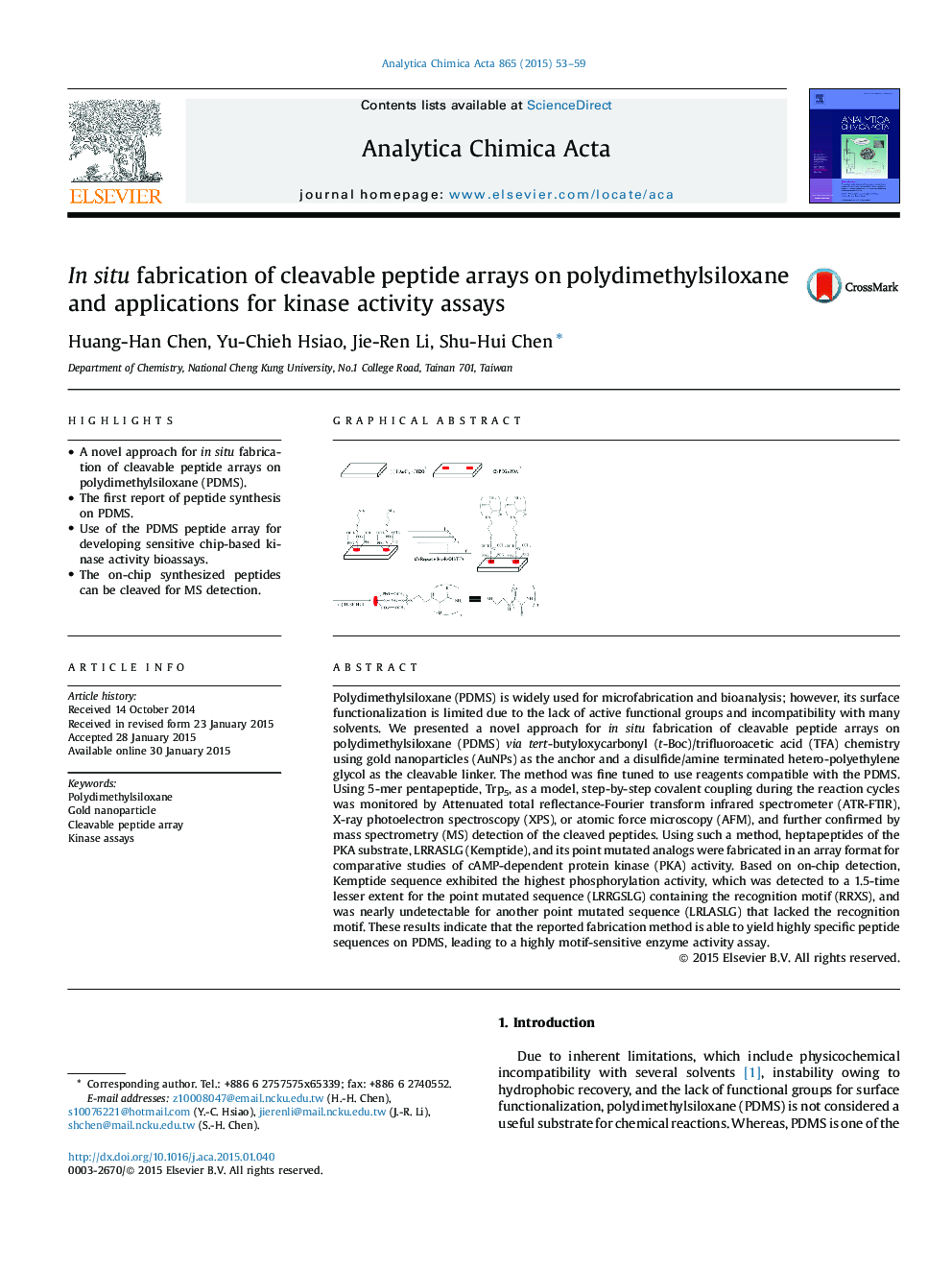| Article ID | Journal | Published Year | Pages | File Type |
|---|---|---|---|---|
| 1164025 | Analytica Chimica Acta | 2015 | 7 Pages |
•A novel approach for in situ fabrication of cleavable peptide arrays on polydimethylsiloxane (PDMS).•The first report of peptide synthesis on PDMS.•Use of the PDMS peptide array for developing sensitive chip-based kinase activity bioassays.•The on-chip synthesized peptides can be cleaved for MS detection.
Polydimethylsiloxane (PDMS) is widely used for microfabrication and bioanalysis; however, its surface functionalization is limited due to the lack of active functional groups and incompatibility with many solvents. We presented a novel approach for in situ fabrication of cleavable peptide arrays on polydimethylsiloxane (PDMS) viatert-butyloxycarbonyl (t-Boc)/trifluoroacetic acid (TFA) chemistry using gold nanoparticles (AuNPs) as the anchor and a disulfide/amine terminated hetero-polyethylene glycol as the cleavable linker. The method was fine tuned to use reagents compatible with the PDMS. Using 5-mer pentapeptide, Trp5, as a model, step-by-step covalent coupling during the reaction cycles was monitored by Attenuated total reflectance-Fourier transform infrared spectrometer (ATR-FTIR), X-ray photoelectron spectroscopy (XPS), or atomic force microscopy (AFM), and further confirmed by mass spectrometry (MS) detection of the cleaved peptides. Using such a method, heptapeptides of the PKA substrate, LRRASLG (Kemptide), and its point mutated analogs were fabricated in an array format for comparative studies of cAMP-dependent protein kinase (PKA) activity. Based on on-chip detection, Kemptide sequence exhibited the highest phosphorylation activity, which was detected to a 1.5-time lesser extent for the point mutated sequence (LRRGSLG) containing the recognition motif (RRXS), and was nearly undetectable for another point mutated sequence (LRLASLG) that lacked the recognition motif. These results indicate that the reported fabrication method is able to yield highly specific peptide sequences on PDMS, leading to a highly motif-sensitive enzyme activity assay.
Graphical abstractFigure optionsDownload full-size imageDownload as PowerPoint slide
